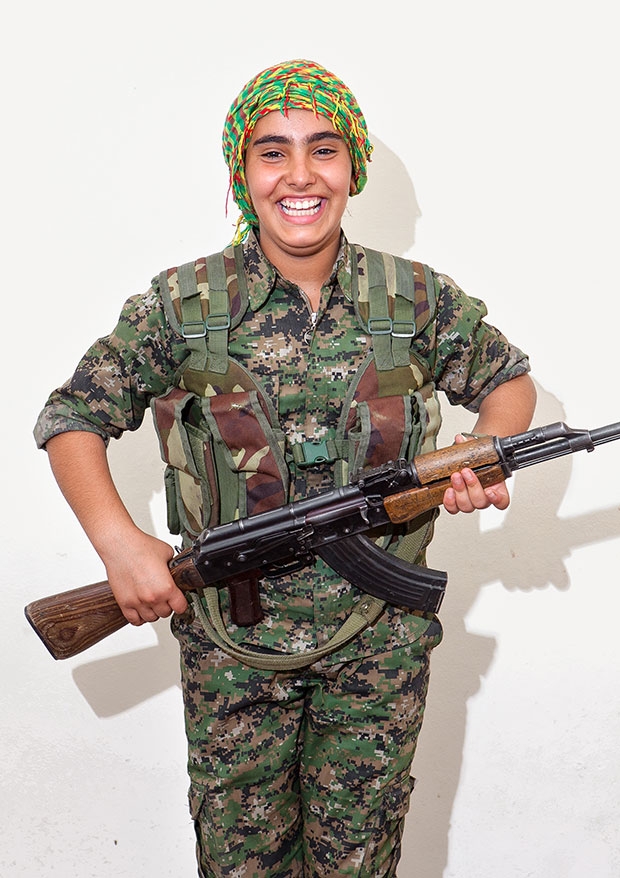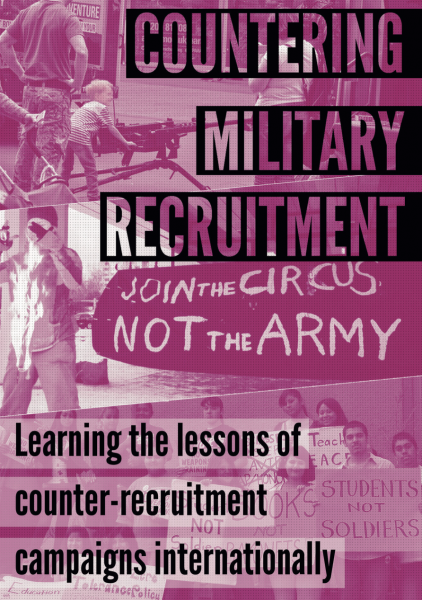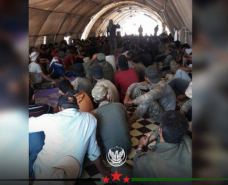How Not to Talk About the Women Soldiers Fighting ISIS

Photo: YPJ soldier, Hevedar Mohammed, aged 12. Image Credit: Marie Claire.
by Tasbeeh Herwees
For weeks now, news organizations have been obsessed with the women fighters battling ISIS as part of the Kurdish Women’s Protection Unit (YPJ). Last week, Marie Claire magazine exposed itself to furious criticism after posting a photo essay titled, “These Remarkable Women Are Fighting ISIS. It's Time You Know Who They Are.” Except not all of the Kurdish fighters featured in the article were women—two of them were girls of 12 and 14 years old. Both of them were dressed in army fatigues; one of them clutched a gun in her hands and the other held up a peace sign.
The article provoked an uproar from readers who were concerned that the photos of these young girls were being disseminated in the first place, and that the girls’ inclusion in the militant resistance was being glorified. Marie Claire removed the photos and issued a statement: “The efforts of the YPJ are remarkable but Marie Claire does not condone the use of child soldiers in any capacity.”
It’s unsettling that no one who participated in the publishing process raised any objections to the piece before it went up. Would the editors have exercised more restraint if the photos depicted child soldiers in South Sudan or those fighting among the extremist militias in Syria? Of course they would have, and that hypocrisy extends far beyond Marie Claire and into the moral positions the West often takes with regards to conflicts in the Middle East and North Africa. The Western press celebrates the Kurdish women fighters because they reinforce commonly held views about religious extremism and sexism in the region. Their means and ends are less important than the fact that they oppose ISIS like the West does. The fact that they are women fighting a misogynistic, ideological force provides karmic relish to the narrative.
This celebration also trades in the West’s facile notions about women in the Middle East —that they are always passive, silent, and oppressed. But history is already full of examples of Muslim and Middle Eastern women on the frontlines of war. There is Khawlah bint al-Azwar, the 7th-century Muslim Arab warrior who commanded an entire army during the Islamic conquest, or Naziq Al Abid, the army general of the 1920s whom historians often refer to as Syria’s “Joan of Arc.” More recently, following the fall of Saddam Hussein, women in Baghdad formed an army brigade to combat enemy insurgents.
To complicate matters further, even ISIS has women fighters on their side. The extremist group formed Al-Khansaa Brigade, an all-women brigade, which not only staffs checkpoints but also patrols the streets for displays of female immorality. Umm Al Rayan is also another ISIS-linked all-women brigade. ISIS’ motives for forming these units are not for women’s empowerment; they’re for maintaining military control of all sectors of society. Similarly, but on the opposite side of the conflict, Kurdish women have been fighting in armies prior to the creation of ISIS, and their central goals weren’t feminist in nature. They were about reclamation of land and political autonomy, freedom and dignity.
The bravery of these Kurdish women is admirable, but any glorification of the violence they must partake in is a disservice to their cause. If the intent is to forge a better world, then the goal should be about an elimination of military conflict, not an expansion of it. The children featured in Marie Claire didn’t opt into the resistance purely by choice. The conditions of their daily life compelled them to take up arms. We may want to celebrate them as heroes, but any child fighting with an army is a victim.
Source: GOOD
Countering Military Recruitment

WRI's new booklet, Countering Military Recruitment: Learning the lessons of counter-recruitment campaigns internationally, is out now. The booklet includes examples of campaigning against youth militarisation across different countries with the contribution of grassroot activists.
You can order a paperback version here.








